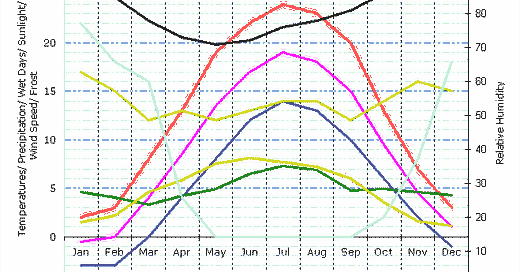Germany Can't Even Heat It's Homes and Businesses With Renewables
There is Virtually No Solar Power When Electrical Demand is Highest: In Winter
After 30 years of Climate Change hysteria and vast resources devoted to “renewable” energy (wind and solar) in Germany, they have done a great job in producing electricity with “renewable” wind and solar at a total of 37% of the total electricity.
Wow, great! I’m sure it’s the number that is highly touted as success after $100s of billions of dollars were spent on subsidies to both homeowners for solar installations and for the utility companies. Utility companies must be paid subsidies to be on “standby” to be able to ramp up electricity production when it’s cloudy, dark or COLD.
But here’s a little secret: Germany’s most intensive need for power is in their 4 to 5 months of winter. Their highest loads are in winter for heating homes. But there is nearly zero solar energy available for most of their winter.
You see from the graph below, in Germany, at about 52 degrees North Latitude there's only about 2.5 hours of sunshine per day for 4 to 5 months during winter. And this light is quite low in intensity and so low on the horizon that there is very little energy can be captured.
And it’s COLD there in winter with 5 months of average temperatures below 40 deg F. Even in summer, where there is 7 or 8 hours per day of official sunshine, the early morning and late afternoon sunshine is low intensity and marginally useful for solar energy generation (this is true everywhere).
There’s also mild winds inland (but often much fresher winds near the North Sea.) I don’t know, but most of Germany is not very windy. Offshore wind is outrageously expensive to build and maintain and wind farms near beaches aren’t very attractive.
So electric utilities must ramp-up power generation using natural gas opps—low supplies, nuclear oops—-low supplies or coal oops —-frowned up by the Green Party.
Now For The Bad News Regarding Germany’s Energy Situation
But electricity is only a small fraction, or only about 16%, of the country’s total energy needs. The rest of their energy needs are for personal and large transportation, industry and to provide oil and natural gas as industry feedstocks. Did I mention that Germany is an industrial powerhouse?
And wind and solar energy only constitutes 6% of the total energy that the Germany requires. The other 94% is mostly oil, coal, natural gas, nuclear and biomass.
Summary
So, there’s very little “renewable” energy when Germany is coldest and energy demand is the highest, which is winter. And electricity is only a small portion of the total energy required by this highly industrialised nation. This is really the same situtation for the US except that much of the US has the highest electricity demand when it’s very hot AND for when it’s very cold.
You could say that, without fossil fuels, Germans will freeze unless industry (and jobs) are shut down! That’s the current situation in Germany and the rest of Europe as they snub Russian oil and gas. No wonder there’s a mad dash to find firewood in Germany. I guess they can also burn coal like jolly old England of 1890.
As an aside, wind and solar is only 4% of the total energy required in the USA. See the chart below. I’ll be posting again about how incredibly unreliable all of these renewable energy sources are. It’s time we get realistic about from where reliable power comes.







I don’t know why I can comment on some things, At certain times, But not at any time 24/7 around the clock.
Germany is no different than a lot of other countries when it comes to shooting themselves in the brain over a so-called global cooling, global warming or whatever the hell they’re calling it nowadays. Here’s an article about all of Europe that I saved recently. “Lights out, ovens off: Europe preps for winter energy crisis”. (i’m going to post just a little bit to wet everybody’s whistle)
“FRANKFURT, Germany (AP) — As Europe heads into winter in the throes of an energy crisis, offices are getting chillier. Statues and historic buildings are going dark. Bakers who can’t afford to heat their ovens are talking about giving up, while fruit and vegetable growers face letting greenhouses stand idle.
In poorer eastern Europe, people are stocking up on firewood, while in wealthier Germany, the wait for an energy-saving heat pump can take half a year. And businesses don’t know how much more they can cut back.”
“We can’t turn off the lights and make our guests sit in the dark,” said Richard Kovacs, business development manager for Hungarian burger chain Zing Burger. The restaurants already run the grills no more than necessary and use motion detectors to turn off lights in storage, with some stores facing a 750% increase in electricity bills since the beginning of the year.”
“ https://apnews.com/article/russia-ukraine-germany-prices-cca7e5afd38fbcfc1ad72934e8e59bd9 “
TALK ABOUT SHEER SOCIAL-INSANITY.